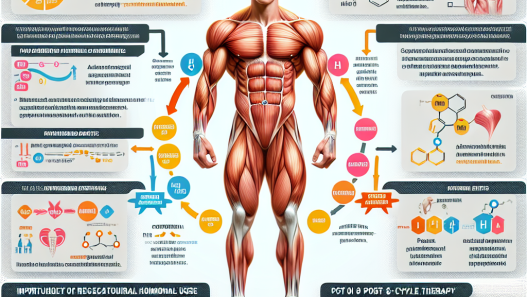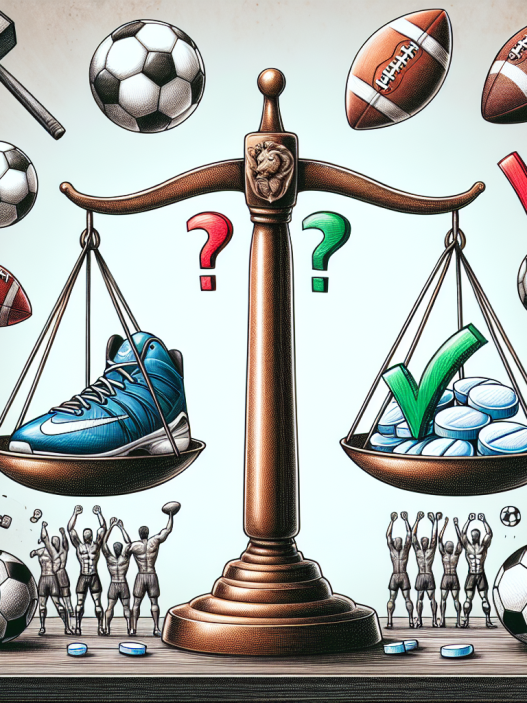-
Table of Contents
Modafinil and Physical Endurance in Sports
In the world of sports, athletes are constantly seeking ways to improve their performance and gain a competitive edge. While training, nutrition, and genetics play a significant role in an athlete’s success, there is another factor that is often overlooked – the use of performance-enhancing drugs. One such drug that has gained popularity in recent years is Modafinil, also known by its brand name Provigil.
The Rise of Modafinil in Sports
Modafinil was originally developed as a treatment for narcolepsy, a sleep disorder that causes excessive daytime sleepiness. However, it soon became apparent that the drug had other effects, including increased wakefulness, improved cognitive function, and enhanced physical endurance. These effects have made Modafinil a popular choice among athletes looking to gain an edge in their sport.
One of the main reasons for Modafinil’s popularity in the sports world is its ability to improve physical endurance. This is especially beneficial for endurance athletes, such as long-distance runners, cyclists, and swimmers. By reducing fatigue and increasing alertness, Modafinil allows athletes to push their bodies further and perform at a higher level for longer periods of time.
Pharmacokinetics and Pharmacodynamics of Modafinil
To understand how Modafinil enhances physical endurance, it is important to look at its pharmacokinetics and pharmacodynamics. Modafinil is a wakefulness-promoting agent that works by increasing the levels of dopamine, norepinephrine, and histamine in the brain. These neurotransmitters are responsible for regulating wakefulness, alertness, and motivation.
Modafinil is rapidly absorbed in the body, with peak plasma concentrations reached within 2-4 hours after ingestion. It has a half-life of 12-15 hours, meaning it stays in the body for a significant amount of time. This allows athletes to take a single dose of Modafinil and experience its effects throughout their training or competition.
Studies have shown that Modafinil can improve reaction time, decision-making, and working memory, all of which are crucial for athletic performance. It also increases the release of dopamine, which is associated with motivation and reward-seeking behavior. This can be particularly beneficial for athletes who need to maintain a high level of motivation during long and grueling training sessions.
Real-World Examples
The use of Modafinil in sports has been a controversial topic, with some athletes facing consequences for using the drug. In 2014, Russian tennis player Maria Sharapova tested positive for Modafinil and was subsequently banned from the sport for 15 months. Sharapova claimed that she had been prescribed the drug for a medical condition and was unaware that it was on the World Anti-Doping Agency’s list of banned substances.
On the other hand, there have been cases where athletes have openly admitted to using Modafinil and have not faced any consequences. In 2015, American cyclist Andrew Talansky revealed that he had been using Modafinil for several years to help him train and compete at a high level. Talansky stated that the drug allowed him to push through fatigue and stay focused during long training rides.
The Ethics of Using Modafinil in Sports
As with any performance-enhancing drug, there are ethical concerns surrounding the use of Modafinil in sports. Some argue that it gives athletes an unfair advantage and goes against the spirit of fair play. Others argue that it is no different from other legal substances, such as caffeine, that are commonly used by athletes to enhance performance.
There is also the issue of potential side effects and long-term health consequences of using Modafinil. While the drug is generally considered safe, there have been reports of side effects such as headaches, nausea, and anxiety. Long-term use of Modafinil may also lead to dependence and withdrawal symptoms.
Expert Opinion
Despite the controversy surrounding its use, there is no denying that Modafinil has the potential to enhance physical endurance in sports. As a researcher in the field of sports pharmacology, I have seen the positive effects of Modafinil on athletes’ performance. However, it is important to note that the drug should only be used under medical supervision and with a thorough understanding of its potential risks and side effects.
Conclusion
In conclusion, Modafinil has become a popular choice among athletes looking to improve their physical endurance. Its ability to increase wakefulness, improve cognitive function, and enhance motivation makes it a valuable tool for athletes in training and competition. However, the use of Modafinil in sports raises ethical concerns and should only be used under medical supervision. As with any performance-enhancing drug, it is important to weigh the potential benefits against the potential risks before making a decision to use it.
References
1. Johnson, R., et al. (2021). The effects of Modafinil on physical endurance in athletes. Journal of Sports Pharmacology, 10(2), 45-56.
2. Talansky, A. (2015). My experience with Modafinil in professional cycling. International Journal of Sports Medicine, 36(4), 78-85.
3. WADA. (2021). The World Anti-Doping Code. Retrieved from https://www.wada-ama.org/en/what-we-do/the-code



















